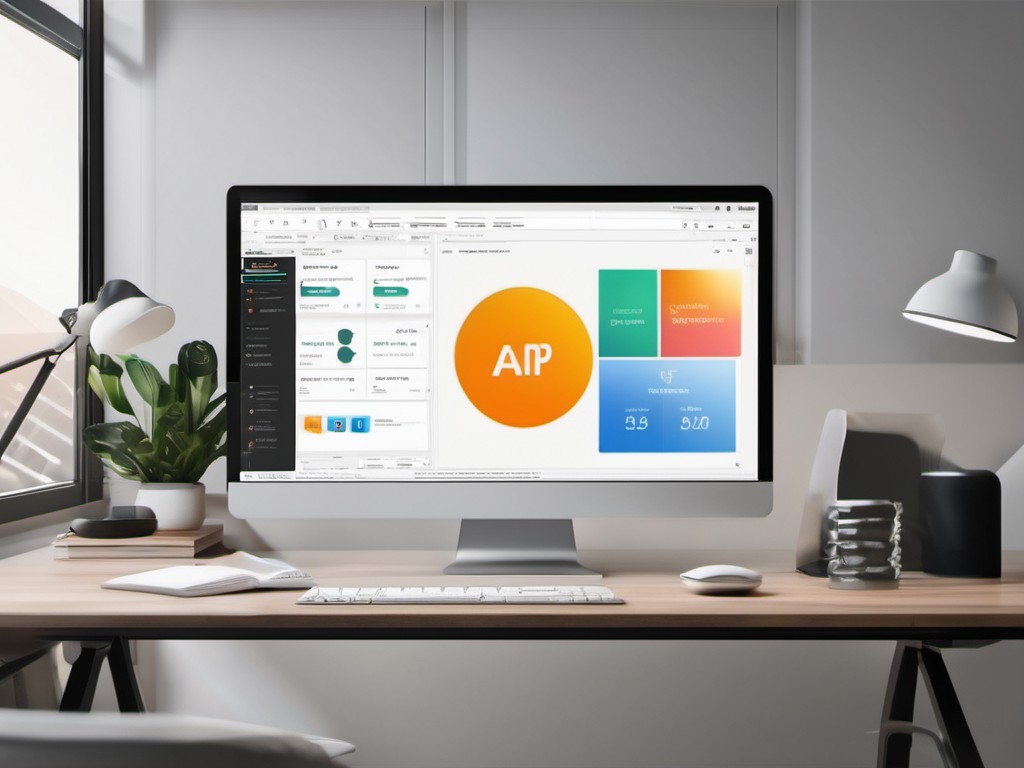· Charlotte Will · Amazon API · 5 min read
How to Create a Custom Application Using Amazon's Product Advertising API
Discover how to create a custom application using Amazon's Product Advertising API (PA-API). This comprehensive guide walks you through understanding the basics, obtaining access keys, setting up your development environment, fetching product data, and displaying products in your app. Learn best practices for handling API rate limits and enhancing user experience to build a successful e-commerce integration tool.

Creating a custom application using Amazon’s Product Advertising API (PA-API) can significantly enhance your e-commerce integration and affiliate marketing efforts. Whether you’re aiming to build a price comparison tool, an automated product listing app, or any other custom solution, this comprehensive guide will walk you through the process step-by-step.
Understanding the Basics of Amazon’s Product Advertising API
Before diving into development, it’s crucial to grasp what PA-API offers and how it works. This API allows developers to programmatically access Amazon’s product database, retrieve detailed information about products, and integrate this data seamlessly into their applications.
Key Features and Benefits
The Product Advertising API comes with a host of features that make it an indispensable tool for e-commerce integration:
- Product Information: Access extensive product details, including descriptions, prices, images, and customer reviews.
- Search Capabilities: Perform keyword searches, browse nodes (categories), and filter results based on various parameters like price range and availability.
- Real-Time Updates: Ensure your app always displays the most current data with real-time updates from Amazon’s database.
- Affiliate Marketing: Easily integrate affiliate links to monetize your application through Amazon’s Associates program.
Getting Started with PA-API
To start using PA-API, you need to understand the basic requirements and steps involved:
- Amazon Associates Account: You must have an active Amazon Associates account to access the API. If you don’t have one, sign up on the Amazon Associates website.
- API Access Keys: Obtain your unique API keys from the PA-API dashboard. These keys are essential for authenticating your requests to Amazon’s servers.
- Compliance with Terms: Ensure you adhere to Amazon’s terms and conditions, including usage limits and data handling policies.
Step-by-Step Guide to Creating a Custom App
Now that you have a fundamental understanding of PA-API, let’s break down the process of creating your custom application into manageable steps:
Registering for Access Keys
Your first step is to register and obtain your API keys. Here’s how:
- Sign In: Log in to your Amazon Associates account.
- Navigate to PA-API: Go to the Product Advertising API section under Tools.
- Create Security Profile: Follow the prompts to create a security profile and generate your Access Key ID and Secret Access Key.
- Save Keys Securely: Make sure to store these keys securely, as you’ll need them for authentication.
Setting Up Your Development Environment
Before coding, set up your development environment:
- Choose a Programming Language: PA-API supports multiple languages such as Python, JavaScript (Node.js), and PHP. Choose one that you’re comfortable with.
- Install Required Libraries: For example, if using Python, install the
boto3library, which simplifies interactions with AWS services including Amazon PA-API.pip install boto3 - Set Up Authentication: Configure your environment to use the Access Key ID and Secret Access Key obtained earlier.
Fetching Product Data
With your development environment ready, you can start fetching product data:
- Initialize API Client: Use your chosen library to initialize an Amazon PA-API client with your access keys.
- Perform a Search Request: Make requests to search for products based on keywords or categories. Below is an example using Python and
boto3:import boto3 # Initialize the client client = boto3.client( 'paapi5', aws_access_key_id='YOUR_ACCESS_KEY_ID', aws_secret_access_key='YOUR_SECRET_ACCESS_KEY', region_name='us-east-1' ) # Perform a search request response = client.search_items(Keywords=['laptop'], ItemCount=10) print(response) - Parse the Response: Extract relevant data from the API response, such as product titles, prices, and images.
Displaying Products in Your Application
Now that you have product data, integrate it into your application:
- Design UI/UX: Create a user-friendly interface to display products. Use frameworks like React or Vue.js for web applications, or Flutter/React Native for mobile apps.
- Populate Data: Dynamically populate the product details fetched from PA-API into your application’s UI components.
- Handle User Interactions: Implement features such as sorting, filtering, and pagination to enhance user experience.
Best Practices and Tips
Follow these best practices to ensure your custom application runs smoothly:
Handling API Rate Limits
Amazon imposes rate limits on PA-API usage. Here’s how you can manage them effectively:
- Rate Limit Monitoring: Keep track of your API requests and responses to avoid exceeding the allowed quota.
- Implement Caching: Cache frequently accessed product data to reduce the number of API calls.
- Error Handling: Implement robust error handling to gracefully manage rate limit errors without disrupting user experience.
Enhancing User Experience
Improve your application’s usability with these tips:
- Fast Load Times: Optimize your app for fast loading times, especially when fetching and displaying product data.
- Responsive Design: Ensure your application is responsive and works well on various devices and screen sizes.
- User Feedback: Implement features like ratings, reviews, and user comments to engage users and improve their overall experience.
Conclusion
Creating a custom application using Amazon’s Product Advertising API opens up a world of possibilities for e-commerce integration and affiliate marketing. By following this step-by-step guide, you can build a robust app that leverages the extensive data and functionalities provided by PA-API. Whether you’re developing a price comparison tool or an automated product listing service, adhering to best practices and continuously improving your application will ensure its success.
FAQs
1. What is Amazon’s Product Advertising API?
Amazon’s Product Advertising API (PA-API) allows developers to programmatically access Amazon’s product database, retrieve detailed information about products, and integrate this data into their applications.
2. Do I need an Amazon Associates account to use PA-API?
Yes, you must have an active Amazon Associates account to access the Product Advertising API. You can sign up on the Amazon Associates website if you don’t already have one.
3. How do I obtain my API keys for PA-API?
To obtain your API keys, log in to your Amazon Associates account, navigate to the Product Advertising API section under Tools, create a security profile, and generate your Access Key ID and Secret Access Key.
4. What are some common use cases for PA-API?
Common use cases for PA-API include building price comparison tools, automated product listing apps, affiliate marketing websites, and e-commerce integrations that require real-time product data from Amazon.
5. How can I handle rate limits imposed by PA-API?
To handle rate limits effectively, monitor your API usage, implement caching for frequently accessed data, and develop robust error handling mechanisms to manage rate limit errors gracefully.



